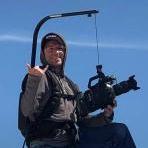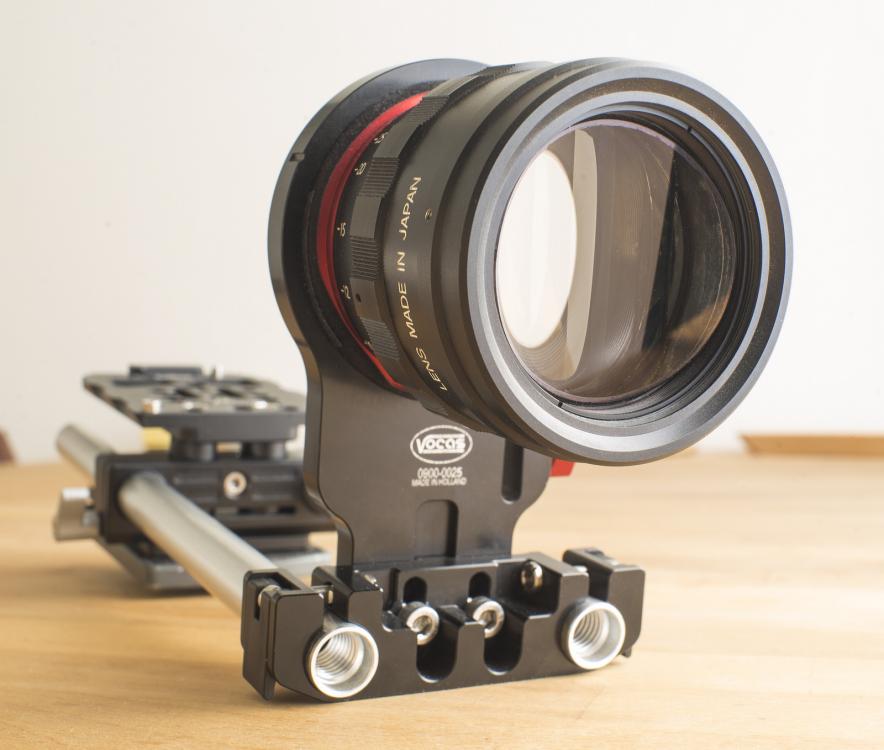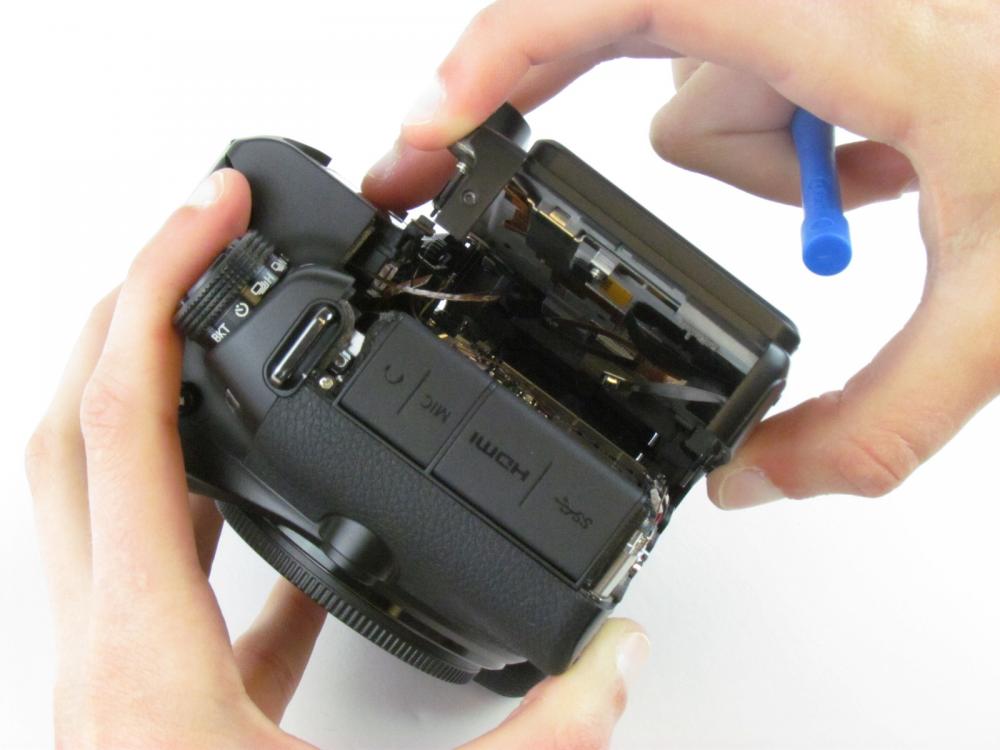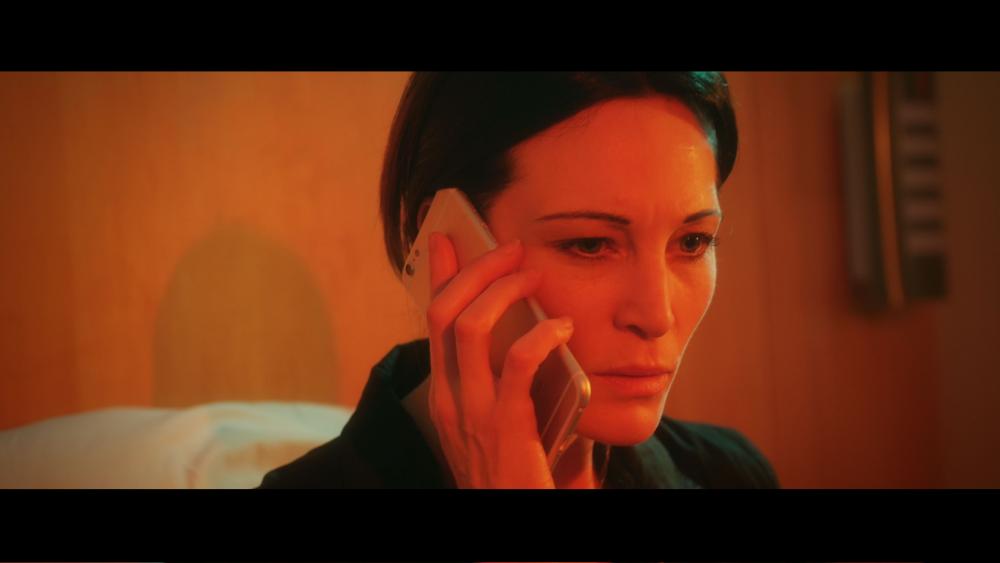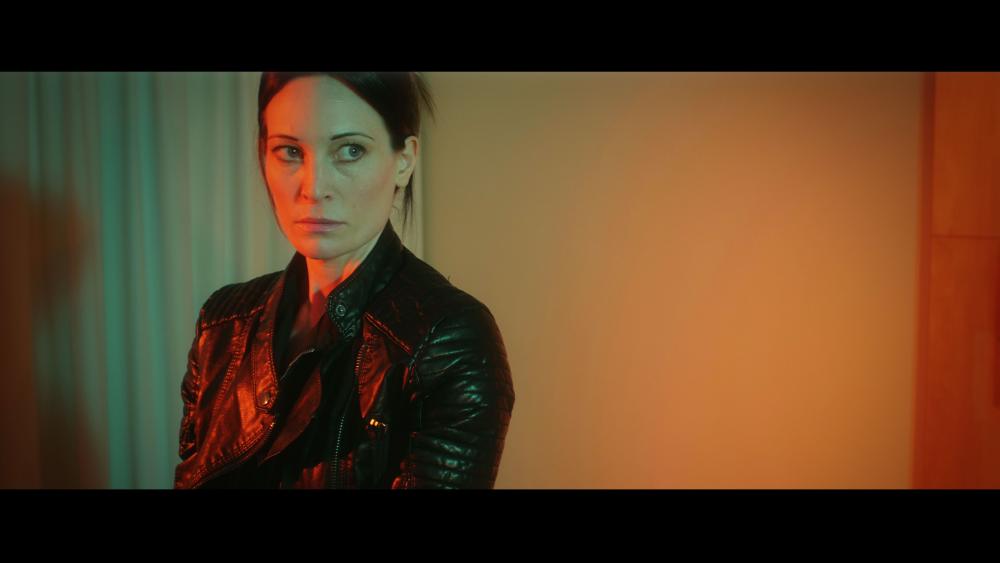Leaderboard
Popular Content
Showing content with the highest reputation on 01/15/2017 in all areas
-
Panasonic GH5 - all is revealed!
jonpais and one other reacted to marcuswolschon for a topic
The GH4 already was a world cam, switchable between 25p and 30p. But the European GH4 (not however the GH4R) is limited to 30min.2 points -

0.64x Leica to APS-C speedbooster
sudopera and one other reacted to Andrew Reid for a topic
Leica Noctilux F1 would be F0.64 brightness on this puppy... I am going to try it out.2 points -

Selling my a7s for a 5D mk3 (???)
Geoff CB and one other reacted to Justin Bacle for a topic
I would say keep you 7s as it is a very good camera, and get a cheap 5dmk2 for raw ? Is the 5dmk2 enough for your raw needs ?2 points -
Because of their methodology; They do the noise measurements from prints (if I remember correctly it's around 8-12 Megapixel prints). Downsize ANY noisy image in Photoshop - and you'll reduce the perceived noise of the image - especially with such a hefty downsizing as 30 MP -> 10 MP. High resolution sensors with fine-grained noise will gain the most in DXO's test. DXOmarks sensor testing is very well done in an unbiased way. But you need to understand their testing methodology and how it applies to what you do with your photography to understand how the sensor will perform for your use case - or if the use case is covered enough by the DXOmark testing. You shouldn't spend much on the single numbers they present either, but rather look at the graphs! And when you do, always always keep in mind that it isn't a measurement done directly from sensor data, but that it has gone the route through downsizing and printing. If you know how those processes function, you also know how that will impact the test outcome. If you care about using the full 30 MP images and how the noise pattern from a camera looks like at 100%, DXOmark is definitely NOT the place to look. It's a good estimation of noise performance at print-sized photos in a magazine - or for photos downsized to fit screens / websites. If you want very large size prints or like to export 100% crops of photos, the noise characteristics can't be extrapolated from the DXOmark data - you'll have to find other tests than theirs. A short summary on how to make use of DXOmark when you're going to buy cameras: 1) Realise that it is only the sensor & processing performance of raw files that get tested 2) Make sure to read and understand the methodology 3) Look at the graphs and compare the cameras that interest you! 4) Due to the downsizing methodology - check elsewhere for sensor and processing performance at different ISOs to get a more complete picture. 5) Now you know a bit about the sensor performance for still photography, which shouldn't really be the main reason for camera choice. Handling, lens choice, video performance etc will have to be tried & tested and read and learnt about elsewhere.1 point
-
The Schoeps CMC641 is one of the top indoor microphones if you want the best. The Audix SCX1-HC performs very similarly and is a great deal (we use both and they match well). Curtis Judd doesn't recommend the NT5 for indoor dialog (you can hear the NT5, Audix, and a few others tested here).1 point
-
In my eye, what separates a proper cinema camera and cinema look from my own work (with an eos M) are these: resolution: not to be confused with sharpness, looking at images from a black magic camera, even at 1080p, I can clearly see how much detail they resolve, were my camera needs to do sharpening instead, to give the illusion of detail. and that "sharpening" is something that I think gives away the video look. Of course sharpening is used often in cinema, take a look at tomorrow land for example, but I'm sure those effect are done in more advanced and complex manners that what my camera does. A few month back, I downloaded some sample file from RED and was actually surprised how soft the 5k and 6k footage looked at 100 percent, but it looked more "filmic" and "cinematic" anyway... and no aliasing and moire of course. having a lot of dynamic range doesn't hurt but I think one can work around a limited dynamic range... The other thing is color and tonality, this is again were cinema cameras can manage to store as much information as possible so the end product is richer in terms of color. and all the other thing that you yourself mentioned.... lighting, set designing, camera movement, lenses... and a good story. as for transforming a video look into a more filmic look... I think the basic rules are use as less in camera sharpness as possible, expose properly and try to manage the dynamic range and avoid shooting with a high contrast picture profile to get a flatter look which some argue that itself looks more cinematic, and plugins like film convert can actually give you a more filmic, I personally like the grain they produce and use it whenever i denoise my footage. but please be subtle when using any kind of effect or lut. think about composition and move your camera properly... for practice, study your favorite movie or music video or... and pay attention to every aspect of the image that you see and like, from color and contrast to camera angel and movement and framing and etc. sorry for the long post...1 point
-
You have the EF Lens Turbo I assume? With that lens budget, I'm not sure I would bother with the Pentax. I would look into Nikkor ai/ai-s lenses. They have a similar warmth as the Pentax but a lot more options for focal lengths. They're also easily converted to cine lenses with the Duclos mod. Check out the 24mm f2, 35mm f2 or 1.4 as your budget allows it, and the 50mm 1.8. All great lenses. Also you cannot go wrong with the Contax Zeiss lenses either. I briefly owned the Planar 50mm 1.7 and it was one of the best 50mm lenses I ever used. I couldn't afford any of their faster wide angles like the 28mm f2 "Hollywood" so I decided to sell the 50mm and go a different route. I have heard the Distagon 28mm f2.8 is a fine lens though and some argue the difference in price between the f/2 and f/2.8 isn't worth it... but the f/2 has some of the coolest rendering I have ever seen in a vintage lens and from what I've seen shot with it, it is worth the moniker "The Hollywood." Also some of the Yashica ML lenses were supposedly made with Zeiss glass and they can be had pretty cheap. Also if you want that vintage look with that Pentax build quality, look no further than their earlier Takumar line. The SMC Takumar 50mm 1.4 is a gem and I really love both the 35mm f2 and the 35mm f/3.5. I never owned the 28mm f/3.5 but some say it's one of their best lenses. I did have the 20mm f/4.5 and the 24mm f/3.5 and they were both very nice lenses. And finally, Pentax made a 28mm f/2 lens that was supposedly designed by Zeiss and it is supposed to rival that of the Zeiss Distagon f/2. I think Andrew Reid wrote an article about it a while back. It's a rare lens but you may be able to find one within your budget. The Pentax forums has a really cool lens database that has tons of user reviews of lenses. It's mostly for Pentax cameras but since Pentax was such a popular camera back in the day, you can usually find reviews on a ton of 3rd Party lenses as well. Hope that helps.1 point
-
I had no issues (GX7 camera and 45 1.8, 12 f2 and 14-42 ii kit lens). I found the Pana 20 to be ok for AF, just it could not be used for AFC for stills.1 point
-
Petition for Samsung NX1 hack
lucabutera reacted to Blah Blah for a topic
I tried to use a HDR script that switches iso. I only tried to change it 1 times per second and still it stops/crashes the recording very quickly. I was planning to try switching with a gap of 0.04 but didn't since the slow one crashed immediately. I measured how much an ISO change usually takes and it linux tool time gave a sys reading of 0.02 sec to 0.06 sec. My skills aren't enough to diagnose why it crashed the recording.1 point -
New information regarding H.265 on the Panasonic GH5
Jeroen de Cloe reacted to markr041 for a topic
You are correct; it has been said in this thread before. Yet it is not corrected by the original person who made that false claim. In fact, there are a lot of false claims about H265 in this thread (only better at low bitrates). Panasonic has not been forthcoming either about why it chose to use only the old, inefficient H264 for intra or 4K long.1 point -
Not just space on your Desktop, the cards that you have to buy to record a full shoot day. You will need a lot! Also look into the monitoring of the RAW signal. I don't think you can use and external monitor with the 5D Mark 2 and last I saw there was some issues with the Mark 3.1 point
-
I guess you still can't have the screen and EVF in "Sunny" mode when filming 4k can you? I doubt the 6500 has fixed this. Hard to film what you can't see on sunny days. I sold my A7Rii because of this. I'd be interested to see their A7Riii and if they have this overheating issue fixed once and for all.1 point
-
For street stuff, I much prefer some sort of gritty looking grade over a neutral look. But for close up skin tones like in the clip of my wife (not my mother btw ... I won't tell her you said that. LOL) yes, for sure the first looks better. HK is great for street photography ... very colourful and arty city with a broad mix of people. It's one of the many reasons I love living here An amazing place for sure. I have loads and loads of street clips I've shot with the GX85 & recently the G85 over the last two months but I've been to lazy to edit any of them but started going through them today looking for some interesting stuff.1 point
-
Few Test shots with the 25/0.95 SLR Magic on the GX85. SOOC ... no correction at all. Just exported ProRes422 Master on FCPX and uploaded to Vimeo. Seems like a very nice lens. All these were taken @ 0.95 which seems usable up close but not from a distance (very low resolution @ 0.95 ... like my Nikon AiS 50/1.2 when used @ 1.2). By 1.4 things are looking good. Focusing is silky on this lens and the IBIS makes using it handheld a dream !! Not sure I could ever use a no IBIS cam again. I think these settings are fine for skin colours too. Looks very close to the actual colour of my wife's skin The settings go well with FilmConvert GH4 Natural profile as well which I understand are developed to use at default levels anyway (Contrast & Saturation). Natural Contrast: 0 Sharpness: -5 Noise Reduction: -5 Saturation: 0 SLR Magic Vari ND1 point
-
Samsung NX Speed Booster
lucabutera reacted to ttbek for a topic
Double checked again without the lens hoods, it doesn't start suddenly but starts becoming noticeable around 150mm on my Tamron 70-300. By 300 it is clear and obvious, on the 400 f/5.6 the corners become almost completely dark. Different lens designs may make it show more or less, for example it definitely shows less on the 400 f/2.8 than on the 400 f/5.6. I'll try to post sample pics sometime later today.1 point -
It's actually an adapter made by Vocas for mounting a PL to E-mount adapter. The inner clamp diameter is a fraction bigger than the outer diameter of a Redstan clamp...with a thin layer of felt tape applied on the inside, It resolves the issue perfectly. It gives a very secure grip, as well as avoiding metal on metal damage when cranking down on the clamp support to lock everything tight. Here is my other setup with the B&H attached.1 point
-
We have discussed contacting Coast to Coast as we both have contacts there. I contacted George Knapp (area 51, Bob Lazar stories) when we studied NLP in Vegas, however he was busy and we're not primarily focussed on UFOs or Area 51. There is something possibly very interesting going on in Antarctica- a discovery of a lost civilization, (advanced technology ruins), a break-away civilization (with advanced technology- zero point energy, antigravity, etc.), or aliens from other planets or universes. All these subjects are fascinating, as is the human mind and the nature of reality itself. While most of the reports of these things are bunk, hoaxes, etc., a few are very compelling, especially military, commercial pilots, and astronaut reports. The central theme of Cosmic Flow is mind expansion and healing. While my day jobs are executive leadership positions and I have no issues speaking to live audiences, my on camera performance needs work. Jacqui is a trained actress and comedian (+ hypnotherapist and NLP coach) and thus we've focused on putting the best talent in front of the camera. We'll both be talking at the Conscious Life Expo in LA Sunday February 12th (George Noory will be there (c2c), as will Sean Stone (Oliver Stone's son; we had him on Cosmic Flow as a guest talking about Aliens/UFOs)). Jacqui will be talking about past lives and I'll be talking about nutrition and health (we'll be selling my e-book on recommended supplements and experiences with nutrition and healing myself after facing death a few times (started after being poisoned with gadolinium for an MRA (MRI with contrast)). Facing death completely changes one's view on life. There is a way to experience facing death without actually almost dying: DMT can do it and especially 5MeO-DMT. I used to eat junk and didn't listen to people recommending that I stop and eat healthy, so I completely understand when people won't listen to truth- I ignored it too until facing death. Many people won't quit smoking, drinking, or eating junk until having a heart attack, stroke, or cancer, etc., and a doctor tells them you have a choice. Change your ways or die (some people still choose death, and that's OK too).1 point
-
@rooney111 ...or very good friend with the penguins, or be one.1 point
-
I thought maybe you were a 4k leica -no smeary corners- guy1 point
-
Good cameras never become outdated... ;-)1 point
-
I am reading your Sony and Fuji experiences and I am so very glad I haven't abandoned my NX1 yet.1 point
-

FYI Ifix it has several NX-1 Teardown Manuals
Pavel Mašek reacted to Juxx989 for a topic
1 point -

Biggest clusterfuck of 2016
rooney111 reacted to Eric Calabros for a topic
The biggest clusterfuck of 2016 was Syria, where thousands of people, including many photo/video journalists, died and the world did absolutely nothing.1 point -
I’m a filmmaker turned travel vlogger using the GH4. I’ve been shooting in Cinelike D and trying various LUTs each episode. For the latest episode I slapped EOSHD Pro Color on an adjustment layer across the whole episode and took the saturation down to 70%. For this fast turnaround content I look for a LUT that works across many lighting situations. EOSHD Pro Color seems to be a great fast way to add a look. GH4 Lumix 12-35mm Cinelike D (Default Settings) Heliopan Vari ND Airport shots at the end on G7X mkII LUT: EOSHD Pro Color Edit in Adobe Premiere CC2017 Mac1 point
-
Hi Guys, I bought the Zhiyun Crane because of all your helpful reviews, so I thought I would share my experience so far. This is the first project I shot with the crane (and Panasonic GH4): So far it has worked great. Easy to use and quick to set up. As you can see in the video it is not always perfect (far from it sometimes), but I think that has more to do with my lack of experience with gimbals than the gimbal itself. Especially the pan movement in the default mode is not always smooth. It is also a bit heavier than I thought, so I had to pause every 10 minutes or so or the footage would get shaky. As for the batteries, they last very long. I used the gimbal for two projects with the same set of batteries without charging, about 4 hours of continuous usage and they still weren't empty. Well that's all, it's a great gimbal, thank you guys for making me buy it!1 point
-

Opinion - DXOMark's camera scoring makes ZERO sense!
rooney111 reacted to Andrew Reid for a topic
Here's what I don't get though - the 5D Mk IV is a noisy as hell camera with 30MP, yet have you seen the ISO score on Bill's chart and at DXOMark? Makes no sense for it to be so high.1 point -
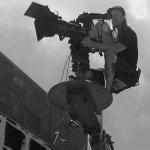
Kowa Anamorphic-35 1.75x Inflight :)
tweak reacted to victorshoots for a topic
So i've been waiting for bit for a while and patiently waiting for the Core DNA to come back in stock to finish my setup. Here is how she sits now! The new Rapido system is great. Had some custom step up rings machined by Raf in russia and everything mates together now. Once I get the rectilux i'll do an initial test then send away for cleaning/adjustment at super16 inc.1 point -

Opinion - DXOMark's camera scoring makes ZERO sense!
dahlfors reacted to Don Kotlos for a topic
Yes cause correlation implies causation in some perceptual realities I guess. Why don't we just start by reading a scientific paper they wrote on this matter: Does resolution really increase image quality? Christel-Loïc Tisse, Frédéric Guichard, Frédéric Cao DxO Labs, 3 Rue Nationale, 92100 Boulogne, France1 point -
Dxo marks always been like that. It's not THE reference ..it's only a reference for those who actually know how to read the graphs and analyse some of the results. Overall score means as much as saying that the sky is blue.1 point
-
Opinion - DXOMark's camera scoring makes ZERO sense!
ttbek reacted to BlueBomberTurbo for a topic
I do agree that DXO's rankings are a bit questionable, but not too far off. There are generally valid explanations of the issues you cited: NX500 over 5DS and NX1: I've personally handled 5DSR files, and can say that the IQ is terrible. Even Canon stated not to expect much more than their old APS-C cameras in the IQ department. I've read a few times that the NX500 is considered to have higher IQ than the NX1. By how much, I don't know. But viewing test RAWs of the NX1, I'd say DR and high ISO are around 1/2 stop behind the Nikon D7200. DXO One: Its Super RAW literally is super. It takes 4 RAW files, stacks them, and averages out the noise. The difference is dramatic. While the detail level isn't the best at high ISO, the lack of noise is well beyond FF capability. This is similar to Olympus' high res RAW mode, but instead of increasing resolution, it reduces noise and increases detail at the same output size. D3X over D5: The D5 is a bomb below ISO 1600, nearly matching the 5D III. Even crop sensors beat it. The sensor is tuned for mid/high ISO performance, though current technology only goes so far. The gains, while there (+1/2 stop vs 1DX II), really aren't worth the trade off for the flexibility in low ISO RAW. Worthy of note is that the D3X has a Sony sensor, while the D5 is Nikon's own creation. D600 over 1DX II and P40+: It's true. The D600 kills the 1DX II in DR at base ISO, and at worst, ties it the rest of the way up. the 1DX II literally has years-old crop sensor performance in that area, despite Canon's massive gain in their new generation of sensors. High ISO is also neck and neck. Vs the P40+, the sensor in the MF camera is quite old. Despite having the resolution advantage, it loses out in DR and high ISO by quite a big margin. By ISO 1600, colors turn to mush, which doesn't really happen on the D600 at any ISO. D3s and D700: I've also worked with files from a D700 multiple times, and can say that yes, its sensor is outdated at this point. It's competitive with today's crop sensor cameras (minus Canon's) at best. The A7S/II sensor has been compared to current medium format in its DR and ability to reproduce color. Once again, the D3s/D700's sensor is Nikon's own. Nikon isn't very competitive when it comes to sensors, and probably had its best attempt at competing with Sony in the D4/s/f. All of the rest of their sensors just don't stand out, though aren't as bad as Canon's. I have a feeling that resolution plays a big part in DXO's rankings. If you downscale the A7R II's files to A7S II size, they will certainly have an advantage in their "Sports" rating. It might also be why the A7R II beats the D810, when the D810 clearly has about 1/3 stop advantage at high ISO. My friend tested 2x A7R IIs before returning them and keeping his D810. #IQsnob. For DR and high ISO, they test noise up to a certain amount. How they get to that amount, who knows, but it's a cutoff point they chose that represents the transition from "OK" noise to offensive noise. So while sensors may have DR response up to a certain amount of stops, after a point, it becomes wiser to turn things back a bit in software. Where that happens is up to the user, as it's a more subjective choice. And "Color" is more about correctly reproducing color in RAW than how the final JPG is rendered. Color in the Canon sense is highly subjective. Color against a known testing scene/chart isn't.1 point -
DXO has their explanations. https://www.dxomark.com/About/Sensor-scores/Overall-Score https://www.dxomark.com/About/Sensor-scores/Use-Case-Scores Low light score in particular is an actual ISO and I think the easiest to explain. "Sports & action photography: Low-Light ISO Unlike the two previous scenarios in which light is either generous (studio) or stability is assured (landscape), photojournalists and action photographers often struggle with low available light and high motion. Achieving usable image quality is often difficult when pushing ISO. When shooting a moving scene such as a sports event, action photographers’ primary objective is to freeze the motion, giving priority to short exposure time. To compensate for the lack of exposure, they have to increase the ISO setting, which means the SNR will decrease. How far can they go while keeping decent quality? Our low-light ISO metric will tell them. The SNR indicates how much noise is present in an image compared to the actual information (signal). The higher the SNR value, the better the image looks, because details aren't drowned by noise. SNR strength is given in dB, which is a logarithmic scale: an increase of 6 dB corresponds to doubling the SNR, which equates to half the noise for the same signal. An SNR value of 30dB means excellent image quality. Thus low-light ISO is the highest ISO setting for a camera that allows it to achieve an SNR of 30dB while keeping a good dynamic range of 9 EVs and a color depth of 18bits. A difference in low-light ISO of 25% represents 1/3 EV and is only slightly noticeable. As cameras improve, low-light ISO will continuously increase, making this scale open." It has nothing to do with AF etc so I think the sports scores are pretty reasonable maybe more so if you just consider them as low light rather than sports and remember it is based on their criteria. I am fine with using an A7s for night time sports. I use an old manual focus 300 2.8 anyway so it just means I can use a higher shutter speed. None of the shots would be printed huge so 12mp is fine. A modern FF DSLR would be a better sports CAMERA most of the time but does it have a better sports SENSOR (given DXOmarks criteria)? The overall scores are a bit based on voodoo as the bits that go into that are subjective without full explanation as to weighting. I think some of the anomalies might be because of a low number of samples tested given many cameras get slightly different scores with the same sensors. A slight difference might be just enough to take a camera a bit over or a bit under their marks. I don't think the A7s is any noisier than the A7sii and It seems the colour depth might be why the A7sii gets a lower score for low light (the point they cross 18 bits for colour sensitivity). For video it is all a bit silly though as they are only testing RAW stills and most video is Jpeg. I would love to see a site test sensors for video. RAW and otherwise.1 point
-
New information regarding H.265 on the Panasonic GH5
Marco Tecno reacted to Kisaha for a topic
@aldolega @Eric Calabros I completely agree with Aldo, and you main not gain nothing over H264 quality wise,but you gain smaller files, less SD cards, great speeds with lesser (and cheaper) SD cards. These are not small things, while with faster, more expensive cards, 200Mbps are achievable in NX-land. For a high end consumer camera like the ones NX1 competed back then, to get 2 64GB cards, in the price of one faster one, is already a gain, also a gain in smaller hard drives, etc. When I shoot multi camera projects, it is just amazing how much space per project I save when I use 2 NX out of 4-5 camera setups. 160Mbps is very stable and great in NX1, a camera that is a little bit younger than the GH4, the issue is not H265, is the specific codec that Samsung put in the camera, which isn't very advanced by today standards. H265 is the next generation, it is made by the H264 people, I do not see them creating a codec for the next 10 years, worst than the one that created 10 years ago, that would be counter productive one could say..1 point -

New information regarding H.265 on the Panasonic GH5
Marco Tecno reacted to aldolega for a topic
I think it's important to remember that h264 has many flavors for different applications, and at this point they are all pretty mature, and have been tweaked and tuned and tested for almost a decade now to their maximum potential; some for consumer applications where low bitrate/easy en/de-coding is priority over IQ, and some for prosumers/pros who demand quality and have the hardware/software to work with the higher profiles and bitrates. Look at the difference between stock GH2 and the mature hack settings; both are h264, but the tuned settings are undoubtedly better quality. h265 is new and mostly the only implementations I know of outside of the NX1 have been video chat, mobile platforms etc where again low bitrate and easy en/de-coding are the priority. The NX1's h265 implementation seems decent for a first go, certainly better than early h264; but the bitrate hacks have shown it can be improved, and (AFAIK) the present hacks are only allowing a higher bitrate, not tuning/altering the encoding itself. So when the camera companies' engineers (and hopefully hackers, if they are able to get deep into the NX1 or another h265 camera) start going to a higher bitrate and tuning/tweaking the encoding implentation itself: I think there could be big gains made.1 point -
New information regarding H.265 on the Panasonic GH5
Marco Tecno reacted to SuperSet for a topic
Premiere CC 2017 handles the NX1 H265 files just fine.1 point -
New information regarding H.265 on the Panasonic GH5
Marco Tecno reacted to markr041 for a topic
At least that is an argument that makes sense. What does "compressed" noise look like?1 point -

nikon d750
kidzrevil reacted to August McCue for a topic
All shot on the D750 with Nikon Ais (besides a few 120fps NX1 slowmo shots which are easy to pick out) For narrative stuff I'v been using it over my NX1 for awhile.1 point -
It should. Only reason it wouldn't is if they rearranged the physical pieces in the mount or the shutter. But if it doesn't work, there will be a new dedicated one soon enough1 point
-
1 point
-
We gained from a narative point of view as the actors perfered this way of working doing longer takes and complex moves with marks all over the set floor became the norm, we did this alot and the movie gained from that freedom , I always opperated the A camera on every take so that handled all the complex moves and focus pulls , yeah Panasonic bullet time here we come !! the Director wanted David Fincher/Nicolas Winding Refn style of shooting so alot shot on legs careful framing , using symmetery where we could find it , and slow dolly moves , the camera only moves when it needs to ,no sudden movemets or randon pans, there are only about 6 or 7 hand held shot in the whole movie , the Director is not a fan of hand held Paul Greengass wobblecam , I do like the hand held look alot and my next film is a Bourne /Bond syle classic British spy film and Im shooting this movie mainly all hand held as it add a dynamic realismto that style of movie.....I'm just starting pre production and tests shoots for this film now. here are 2 test shots from last week I did for the Spy film with one of the actresses Joanna Bright, Panasonic G7 and Nikon 28-70mm with Metabones XL Speedbooster. Arri 300s and 150s gelled and diffused.1 point
-
The XC-10 305Mbit/s codec is nothing extraordinary, it's just another intra frame (ALL-I like codec), the 1Dc and 1DX mk2 have higher bit rate, although not 4:2:2 color, but the image out of them look so much better. I can't really understand what you find appealing in XC-10? My experience with it left me with a bitter taste, the 4K image is very soft (more like 2,5K), DR is BAD, nowhere near 12 stops, the AF is slow and the combination of a small senor and fixed dark lens makes the image very uncinematic, and above all the price is unrealistic + the price of the Cfast cards is very high. I also can't wait for the GH5.1 point
-

Original camera files - download and share!
a_reynolds reacted to fuzzynormal for a topic
Natural Color Profile: 0,-5,-5,-2. Indoor shots with a 55mm FD lens, Chinese Speedbooster, no filters. Stabilizer set to 40mm Highlights set to -2 White Balance Adjust A:3 G:3 https://www.dropbox.com/sh/sqfycip8z52s3z9/AADEWeIG1R1i1hUObtrLGlrea?dl=01 point





